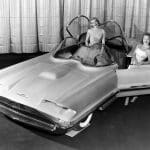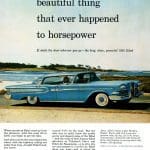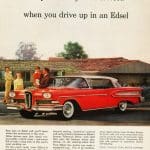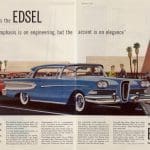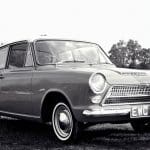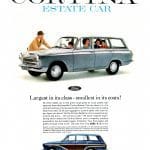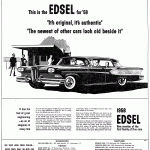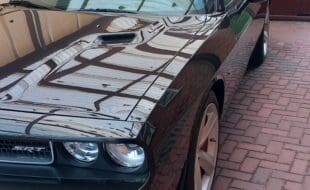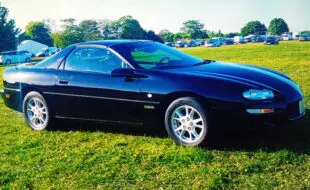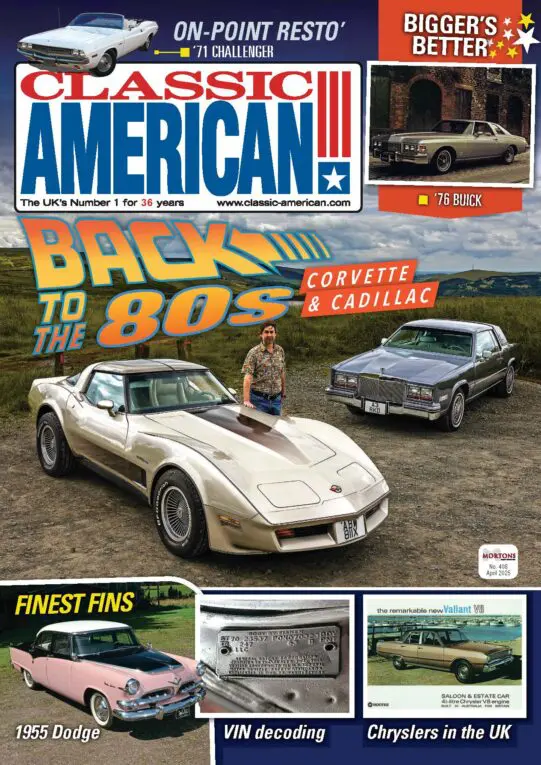Last October marked the birthday of one of the automotive industry’s most important contributors, Roy Brown Jr, designer of the infamous Edsel. Alex Crawford looks back at his remarkable life designing cars long before computers were involved…
Never again will the United States or its auto-industry experience an age like the Fifties. Of that great epoch in American history, its designers became as iconic as their creations. Before long they became household names, and the greats each had their signature in history: Harley Earl had his tail-fin, Virgil Exner his “forward-look”, and arguably the most famous of all – Raymond Loewy – can, without exaggeration, be credited with shaping design in an industrialised America.
Those men who shaped American automotive design in this period of decadence and optimism are inseparable from their successes. Yet equally there are the designers who cannot be separated from their relative failures. Roy Brown Jr. is one such individual – a designer who, despite working on and creating a number of well-known and successful vehicles, is so entwined with the Ford Motor Company’s ill-fated Edsel that it is almost impossible to separate the two.
Enjoy more Classic American reading in the monthly magazine.
Click here to subscribe & save.
Roy Brown Jr. was born in Hamilton, Ontario before moving to Detroit with his family. Like many of his contemporaries, the auto-industry was a family affair; his father was an engineer for Chrysler. Roy however would work for the other two companies of the Detroit “big three” in his life – GM and Ford. It was 1937 when Brown graduated from Detroit Art Academy and began his work for General Motors, and it was while working for the design studio of the Cadillac division that he would admire the grille of the LaSalle, later to become an inspiration for the contentious vertical grille seen on his Edsel.
Brown spent time in the US Army before moving to the Ford Motor Company, where his design work would eventually flourish. Working alongside Bill Schmidt and John Najjar, Brown contributed to the 1955 Lincoln Futura, a popular show car that bestowed styling cues to a number of Ford/Lincoln products and eventually spawned, with the creative genius of customiser George Barris, the famous TV series Batmobile driven by the late Adam West.
But it was Ford’s optimistic vision of the Fifties as displayed in the the “E-car”, that brought for Roy Brown the chromed infamy of which he would be vehemently proud until his death. Placing upon Brown the monumental task of birthing a vehicle to sweep away the Oldsmobiles, Pontiacs and Buicks enticing middle market buyers, Ford demanded a car so individual that it would be totally distinctive from anything else on the road.
To achieve this, Brown rejected tail-fins for a flat rear deck, and with his colleagues devised a vertical grille that eschewed horizontal trends of the time. Notwithstanding the enthusiastic motoring press, the car did not prove the big hit Ford had hoped. An economic downturn, mated to puns, criticism, a nationwide trend towards smaller cars, and a lack of faith from Ford President Robert McNamara, led the company to pull out of the E-car project before the end of the decade. Its only remnant – the Edsel Comet – orphaned and eventually rebranded as the Mercury Comet, proved a huge success.
Brown was deeply affected by the failure of the Edsel marque. As with many of those who worked on the project, he was banished to the foreign markets. Brown was transferred to England where he worked for Ford of Europe. In an ironic turn of events, Brown was then to design the Ford Cortina saloon in 1962, which became the manufacturer’s best-selling vehicle in Great Britain, and soon became the country’s best-selling car in the Seventies. Brown is also credited with design on the Consul and Zephyr models.
Following this success, his career returned him to Detroit, where he assisted in the design of the Econoline van. He continued as an executive designer in the Lincoln Mercury Division until 1974. Throughout his life though, Brown was proud of the Edsel, and despite its reputation, defended it vehemently: “There is not a bad line on the car,” he said in 1985. He drove a convertible Edsel Pacer into his Nineties, and continued throughout his retirement to lecture, paint, and espouse the need for “another Edsel”. Fans of his work would be unlikely to disagree, and will continue to admire him for his devotion to design, passion for his work, and loyalty to the Edsel even through its most difficult times. “Good design is always contemporary,” he noted on some sketches in 1991. Roy Brown passed away on February 24, 2013, at a hospice in Ann Arbor Michigan, in the company of family. He is survived by his wife and four children from a previous marriage.



